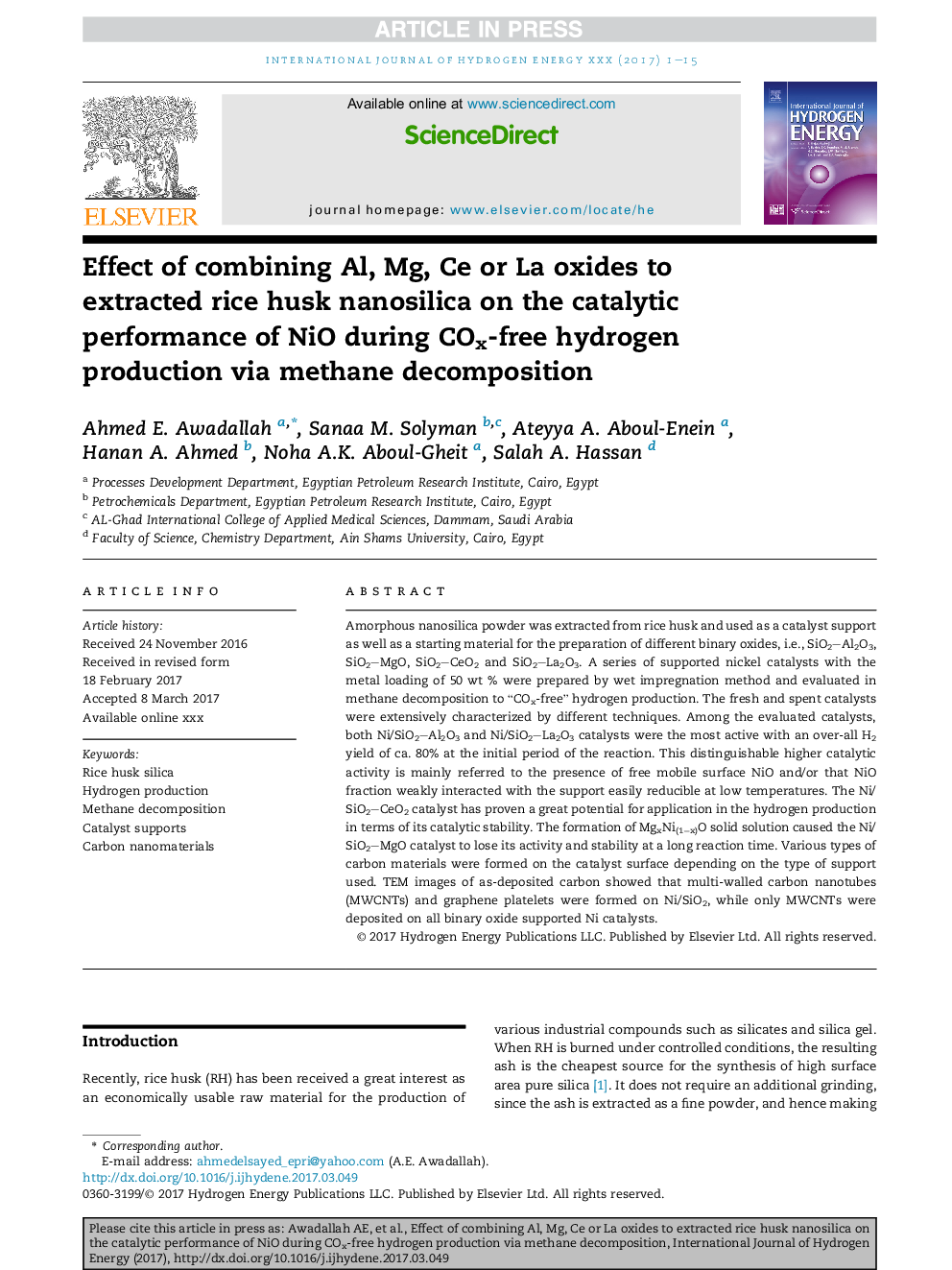| Article ID | Journal | Published Year | Pages | File Type |
|---|---|---|---|---|
| 5147959 | International Journal of Hydrogen Energy | 2017 | 15 Pages |
Abstract
Amorphous nanosilica powder was extracted from rice husk and used as a catalyst support as well as a starting material for the preparation of different binary oxides, i.e., SiO2Al2O3, SiO2MgO, SiO2CeO2 and SiO2La2O3. A series of supported nickel catalysts with the metal loading of 50Â wt % were prepared by wet impregnation method and evaluated in methane decomposition to “COx-free” hydrogen production. The fresh and spent catalysts were extensively characterized by different techniques. Among the evaluated catalysts, both Ni/SiO2Al2O3 and Ni/SiO2La2O3 catalysts were the most active with an over-all H2 yield of ca. 80% at the initial period of the reaction. This distinguishable higher catalytic activity is mainly referred to the presence of free mobile surface NiO and/or that NiO fraction weakly interacted with the support easily reducible at low temperatures. The Ni/SiO2CeO2 catalyst has proven a great potential for application in the hydrogen production in terms of its catalytic stability. The formation of MgxNi(1âx)O solid solution caused the Ni/SiO2MgO catalyst to lose its activity and stability at a long reaction time. Various types of carbon materials were formed on the catalyst surface depending on the type of support used. TEM images of as-deposited carbon showed that multi-walled carbon nanotubes (MWCNTs) and graphene platelets were formed on Ni/SiO2, while only MWCNTs were deposited on all binary oxide supported Ni catalysts.
Keywords
Related Topics
Physical Sciences and Engineering
Chemistry
Electrochemistry
Authors
Ahmed E. Awadallah, Sanaa M. Solyman, Ateyya A. Aboul-Enein, Hanan A. Ahmed, Noha A.K. Aboul-Gheit, Salah A. Hassan,
